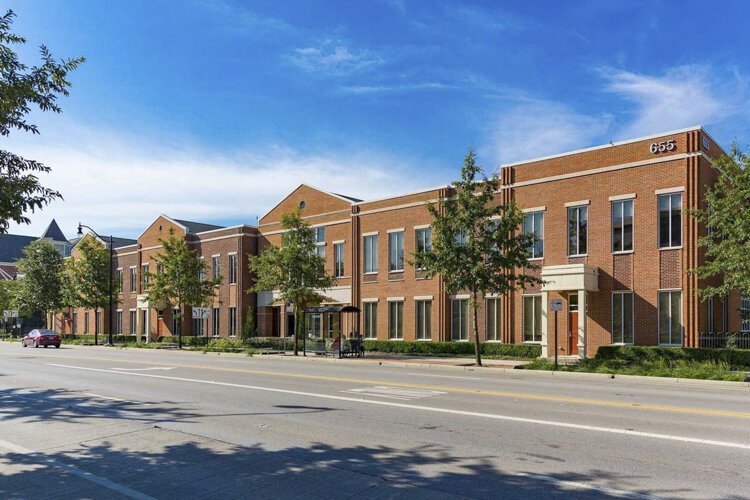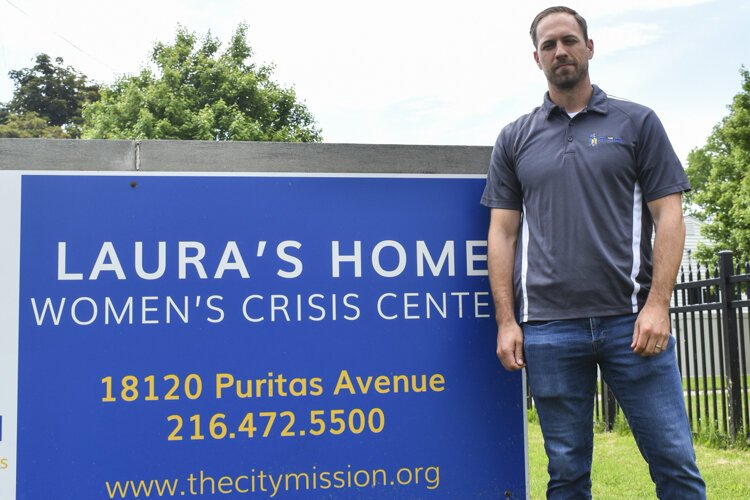Rapid rehousing strategy helps protect domestic violence victims during a pandemic
Domestic Violence Resources
If you, or somebody you know, are experiencing domestic violence or abuse, help is available. Call 911 if you need immediate assistance. Otherwise:
If you’re in Cleveland, you can call the Domestic Violence and Child Advocacy Center’s 24/7 helpline at (216) 391 4357.
If you’re in Summit or Medina counties and need shelter or other aid, you can call the Battered Women’s Shelter of Summit and Medina Counties at (330) 374 1111.
If you need legal assistance in Northeast Ohio, call the Legal Aid Society of Cleveland at 888 817 3777.
For others in Ohio having a hard time finding resources, you can call the Ohio Domestic Violence Network, (800) 934 9840.
Things were finally looking up for Ohio resident Caroline earlier this year. After being forced to leave her home for a time because of domestic violence, she was in her own rental, raising her young children, and was working.
But after the COVID-19 pandemic hit in March, she lost her job.
Not long after losing her job, a violent incident with her abuser again sent her world spiraling out of control. Caroline was unable to talk about the incident in detail, but said it left her scarred—emotionally and physically.
“As the main financial provider, being laid off because of COVID, that was a hardship, and then add in the fact of the stress of being home more, and then the incident happened on top of all that,” Caroline explains of the difficulties she faced at the time.
Editor's note: Caroline asked us to not use her real name in this story to protect her identity.
The pandemic presents new challenges for domestic violence survivors like Caroline, and for the service providers who serve them. There’s early evidence indicating that the pandemic’s various financial and social stressors, coupled with the fact that people are being asked to shelter at home with abusive partners, are leading to an increase in the number of these cases.
For example, research published in August by the National Commission on Criminal Justice found that during the first three months of the pandemic, 14 large U.S. cities saw a 7.5% increase in calls for service to police for domestic violence incidents.
This increase is happening while shelters across the country—for domestic violence victims and homeless people alike—are faced with a need to reduce their numbers or even close (a practice known as “de-congregating”) to reduce or prevent the spread of COVID-19.
Caroline’s abuser was removed from her home after the most recent incident, so she didn’t need to go to a shelter, although she remains unemployed while raising her young children.
Some of the stability Caroline has been able to build back into her life after a tumultuous last few years was thanks to aid from a housing program started last year with the Battered Women’s Shelter of Summit and Medina Counties in conjunction with the Ohio Balance of State Continuum of Care (BoSCoC), called the REACH Rapid Rehousing program.
The program provides immediate aid for survivors of domestic violence and sexual assault who are forced to leave their homes because of abuse, including financial aid to cover necessities such as rent, security deposits, and utilities. In some cases, that aid can be provided for up to nine months.
Caroline currently receives rental assistance provided by the program, which she says has been a welcome lifeline after losing her job. She says it’s been difficult to find a decent-paying job, especially one where she’s not risking exposure to COVID-19 for her or her children when she comes home from work.
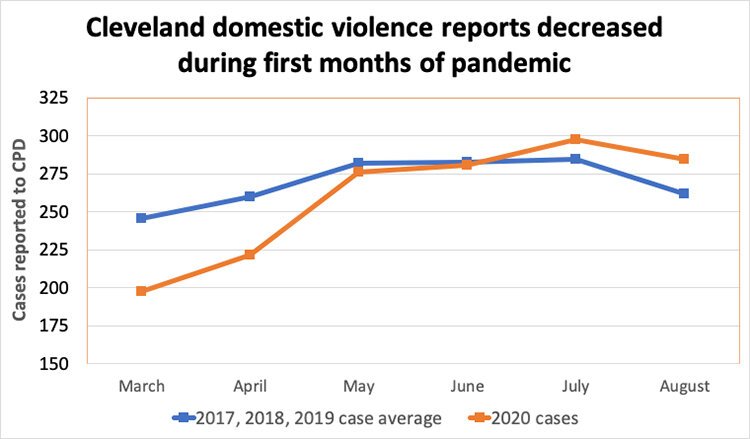
“Then there’s the fear of, ‘Okay, if I do get a job, what am I going to do with my children?’” she says. “The cost of daycare is just insane.”
James Hicks, assistant director for rapid rehousing services with the Summit and Medina County shelter, said the program is one solution to the challenge in keeping the shelter number down.
“Our primary goal is to reduce the numbers in the emergency domestic violence shelters by helping them [victims] obtain their own permanent housing,” Hicks explains. “That takes on a different meaning in this epidemic when we’re trying to maintain social distancing.”
Hicks says the goal is to get survivors and their families into new housing as quickly as possible, within at least 21 days, although that sometimes happens as quickly as three days.
The process starts as soon as a survivor is referred to one of the program’s five housing advocates, who work to meet with them wherever they can do so safely, whether that’s online, at a restaurant, or at a relative’s home (with appropriate social distancing), Hicks says.
The advocates work with survivors on finding housing that fits their needs, while working to come up with short- and long-term goals and connecting them with other resources so that they stay put.
As of early September, 106 families across the state had been helped through the REACH program, a number which has increased dramatically during the pandemic, Hicks says.
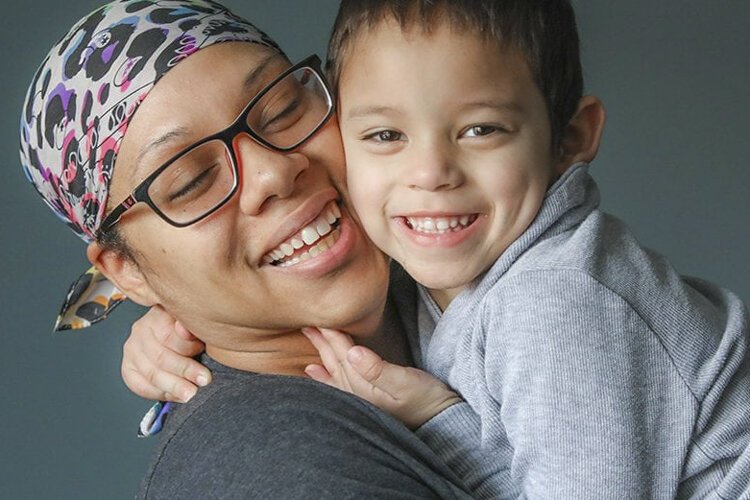 Laura's Home Women's Crisis CenterCompounded problems during the pandemic
Laura's Home Women's Crisis CenterCompounded problems during the pandemic
Elsewhere in Northeast Ohio and across the state and country, homeless shelters and domestic violence shelters have tried to place clients in hotels to create less crowding in their shelters during the pandemic, but that can be expensive to keep up.
The Ohio Domestic Violence Network, for example, has housed 126 families in hotels across the state, for up to 14 days each. Cassie Baker, communications coordinator for ODVN, says the hotel program has seen “a lot of success.”
“We definitely have had some cases that turned out well where we were able to get survivors and their families into permanent housing,” says Baker. “I will tell you that I think this program really highlights the real need for housing options in Ohio and the inadequate amount of affordable housing we have here.”
Melissa Graves, CEO of the Domestic Violence and Child Advocacy Center in Cleveland, said her center similarly is using alternative housing options to move survivors out of the center’s shelter, including a rapid rehousing program similar to the one found at the Summit and Medina County shelter. The need to reduce the number of people in shelter is only one part of the problem, however.
When Ohio’s stay-at-home order was still in effect, Graves says the Cleveland center saw a decrease in calls for help; many of the calls that were coming in weremade in the middle of the night, often when their abusers might be sleeping. That changed as Ohio’s economy reopened.
“Through that stay-at-home order we did see people feeling that they were stuck; they were just trying to do what they needed to do to survive, then as things started to open up we really did see people start to call in greater numbers,” Graves says.
Jill Smialek, director of the Witness Victim Service Center with Cuyahoga County, says her office saw a similar pattern with cases of intimate-partner domestic violence referred by the Cleveland Police Department since last March.
Smialek says that’s a concerning pattern. Still, she says victims who do come forward and make a police report should remember her office connects victims of those crimes with advocates who can help them navigate the process. Additionally, Cleveland police can make a detective available to go to court for these victims to get a protection order against their abusers, without forcing the victims to risk their safety by going to the courthouse.
Other service providers, however, like Laura’s Home Women’s Crisis Center, a shelter for women and children escaping homelessness or domestic violence, have seen a decreased number of calls for help, a decrease that has remained consistent since the pandemic began.
Michael Hahn, Laura’s Home manager, says he’s not exactly sure why, but says it’s worrisome, in that some are opting to stay with their abusers.
"Out of fear of the virus, people aren’t seeking shelter and don’t want to be in a communal type of facility,” Hahn theorizes.
Melanie Rawlins, family advocacy clinician at the Center for Family Safety and Healing at Nationwide Children’s Hospital in Columbus, said pandemic-related unemployment and other financial stressors has meant many survivors “can’t afford” to leave their abusers.
“If the children or they, themselves, have any high-risk conditions, a shelter simply isn’t an option—being around that many people is such a huge risk,” Rawlins says. “They’re stuck between a rock and a hard place at that point.”
Rawlins’ center has been offering direct financial assistance to the survivors of domestic violence and child abuse that it serves, in tandem with offering hotel stays through the Ohio Domestic Violence Network. Cleveland’s DVCAC also got a $200,000 grant from Cuyahoga County to fund online and mobile advocacy resources and emergency housing measures, Graves says.
Caroline, the survivor, says she believes there are plenty of other survivors out there who are either too scared or are otherwise unable to reach domestic agencies for help during the pandemic.
“I’m sure that the numbers are higher than what anybody is saying,” she says.
Rapid rehousing as a model
The concept of rapid rehousing isn’t new. The U.S. Department of Housing and Urban Development began piloting a grant program to fund getting homeless people into permanent housing in 2008. Domestic violence programs in the state of Washington started using similar practices not long after.
But the application of these programs takes on new life during the pandemic, providing people an avenue to get away from their abusers that doesn’t include the risk of staying at a shelter. For the REACH program, assistant director Hicks says most participants receive rental assistance for their first three months in the program. He says that aid has been extended beyond the three months for many people because of pandemic-related job losses.
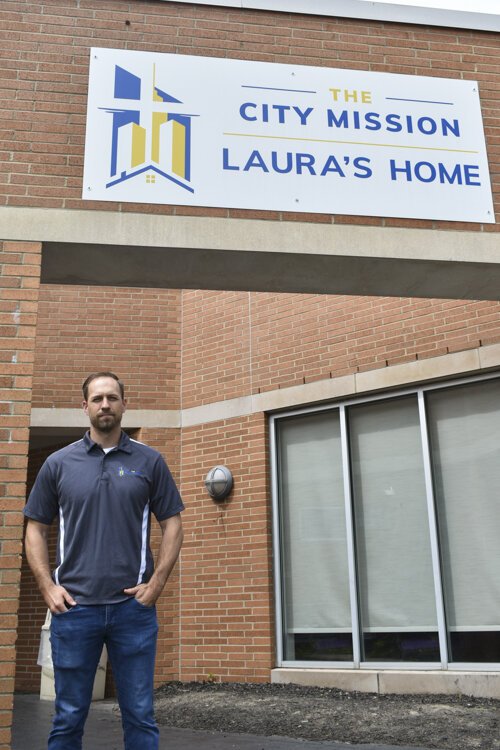 Michael Hahn, shelter manager at Laura's Home Women's Crisis CenterEven then, there are limitations. For starters, to be eligible for the REACH—which is funded by HUD—survivors need to be homeless, have a household income of 50% at the area median income or less, and must be seeking permanent housing.
Michael Hahn, shelter manager at Laura's Home Women's Crisis CenterEven then, there are limitations. For starters, to be eligible for the REACH—which is funded by HUD—survivors need to be homeless, have a household income of 50% at the area median income or less, and must be seeking permanent housing.
Further, only survivors in Ohio’s 80 counties that are considered “rural” are immediately eligible; that excludes Ohio’s “Big 8,” including Cuyahoga County.
The Washington State Coalition Against Domestic Violence, for instance, has supported flexible, rapid rehousing-focused strategies for the past 10 years, helping hundreds of survivors find new homes.
Linda Olsen, housing director with the coalition, said the philosophy around this approach, called “Housing First,” is to provide aid specifically tailored to each person. That could mean accommodating a survivor with disabilities; driving them to look for new houses if they don’t have a car; or providing an interpreter if they don’t speak English.
The main goal is consistent, though. “Ultimately, people need to be in a place of their own with an income mechanism to support them staying there,” Olsen says.
The plan seems to be working. Data collected by the Washington State coalition from the first five years of its Housing First” pilot project found that of the several hundred survivors helped, about 96% were able to keep and stay in their housing 18 months after first receiving assistance from that project.
There are challenges, however. Housing needs to be affordable enough for a survivor to be able to pay rent regularly once the assistance ends, Olsen says, and some agencies have struggled to keep enough staff in the office during the pandemic.
Additionally, there is never been enough funding in the U.S. to support the need for emergency shelter for people fleeing abuse—leaving shelters at capacity and requests for assistance unmet.
Hahn with Laura’s Home says his shelter was constantly full, even before the pandemic.
Still, Olsen says she is hopeful that other states will try to move more funding into a “housing first” approach for domestic violence survivors.
In Ohio, the Ohio Domestic Violence Network recently received about $2 million in federal CARES Act money to create a team of housing advocates to work with domestic violence shelters to get their clients into alternative housing, says Mary O’Doherty, executive director of ODVN. That program is still in the process of being set up.
For Caroline, the REACH program helped her find a new path forward, despite the darkness of the pandemic. And she has a new hope.
“Once my lease is up here, I hope to be able to buy a home next year so that I can invest in myself and my family,” she says.
Conor Morris is a corps member with Report for America. You can email him at cmorris@advance-ohio.com, or find him on Twitter. This story is sponsored by the Northeast Ohio Solutions Journalism Collaborative, which is composed of 20-plus Northeast Ohio news outlets, including FreshWater Cleveland.



